Logitech Unveils LightSync: Syncing RGB LEDs with G560 Speakers and G513 Keyboard
by Anton Shilov on March 21, 2018 2:00 PM EST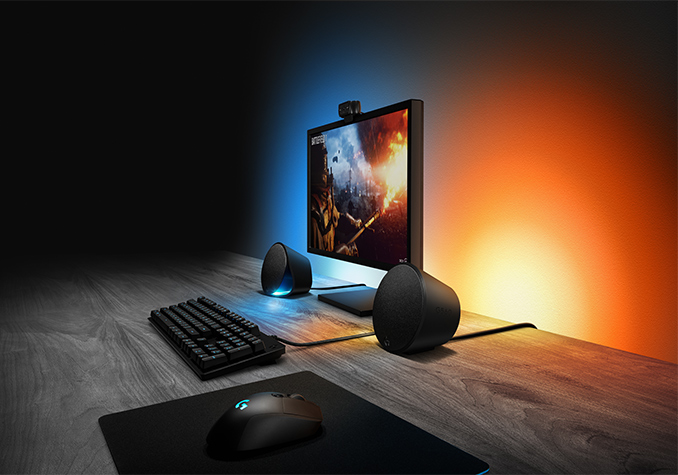
Logitech has introduced its new Lightsync technology designed to add immersion to games as well as to visualize music or movie audio using RGB LEDs inside peripherals. The first two products to feature Lightsync are the G560 speaker system as well as the G513 mechanical gaming keyboard.
Synchronizing ambient lighting with on-screen actions is a way to add immersion to games or movies and is something that has been on the table for a while now. Technically there are several ways to sync ambient lighting with on-screen actions: giving developers a way to control ambient lighting using an API, to analyze colors displayed by on the screen, or to analyze audio and somehow match lighting with sounds. Various companies have either explored or are exploring ambient light synching with on-screen actions and/or audio (see Philips amBX, Razer Ariana, etc.), but today we are talking about the Lightsync from Logitech.
Logitech’s Lightsync uses two out of three aforementioned methods and therefore has two modes. One mode is called Audio Visualizer, it analyses currently played audio and produces appropriate effects: soft breathing in response to low frequency sounds, and lighting pulses to the beat. Another mode is called Lightsync and it has to be supported by game developers to produce lights that match colors displayed by a game. At present the list of games that support the Lightsync includes Battlefield 1, Civilization VI, Counter Strike: GO, Discord, Dota 2, Final Fantasy XIV Stormblood, Fortnite, Grand Theft Auto V, Killing Floor 2, Metronomicon, Tom Clancy’s: The Division, and Total War: Warhammer II.
One of the first products to support the LightSync will be Logitech’s G560 gaming speaker system, featuring RGB LEDs in the satellites. The system itself consists of one large subwoofer as well as two satellites featuring LEDs on the front and on the back. The rear LEDs react to low-frequency sounds (bass), whereas the front LEDs react to mid- and high-frequency sounds. It is noteworthy that to support LEDs in satellites, Logitech had to use proprietary D-sub-like cables. Depending on application, the Logitech G560 works in either Audio Visualizer (should react to all sounds, but this mode is useful mostly for music), or Lightsync modes. In the latter case the Lightsync has to be supported by the particular program. At this point, it is only supported by select games, but going forward its support may get broader.
The Logitech G560 2.1 speaker system has a total output power of 120 W (RMS) and supports the DTS:X Ultra surround sound positional audio technology. The device can be connected to audio sources using a 3.5-mm audio jack, USB, or Bluetooth 4.1 technology. It is compatible with Microsoft Windows 7/8.1/10 as well as Mac OS X (DTS:X is not currently supported on Macs). The speaker system will hit the market next month at an MSRP of $199.99.
Logitech’s G513 mechanical gaming keyboard is another product to support the Lightsync technology. Since the keyboard does not produce any sounds, it does not offer the Audio Visualizer mode. Meanwhile, the G513 can work with compatible games that support the Lightsync, or display various patterns chosen by users.
The Logitech G513 keyboard features a brushed aluminum design and is equipped with either Romer-G Tactile (discernable) or Romer-G Linear (smooth) switches. The G513 comes with a leatherette palmrest and a USB 2.0 pass-through port for added comfort. As for compatibility, the keyboard can work with virtually all modern operating systems: Windows 8 or later, Mac OS X 10.10 or later, iOS 10 or later, and Android 3.2 or later. Just like the speaker system, the G513 keyboard will be available in April, it will cost $149.99.
Related Reading
- Logitech and HTC Team Up to Integrate Physical Keyboards Into VR Environments
- Logitech Launches G603 ‘Lightspeed’: 12,000 DPI Hero Sensor, 1 ms Polling, 500 Hrs Battery
- Logitech Announces The CRAFT Keyboard With Creative Dial Integration
- Logitech’s G613 "Lightspeed" Wireless Mechanical Keyboard Cuts Wires & Input Lag
- Logitech Launches MX Sound Bluetooth and PC Speakers
Source: Logitech G



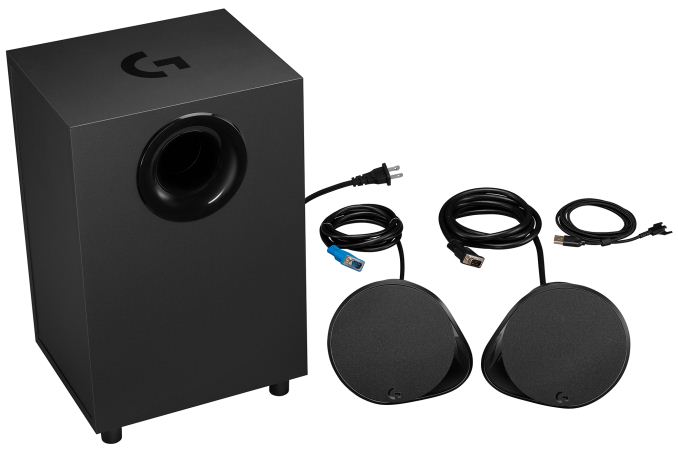
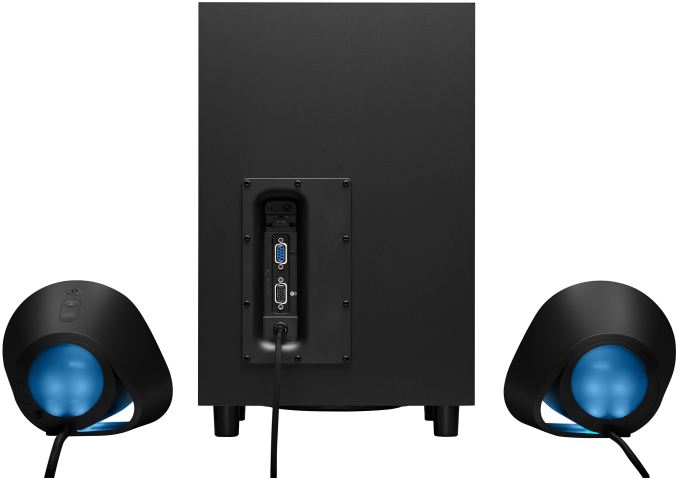
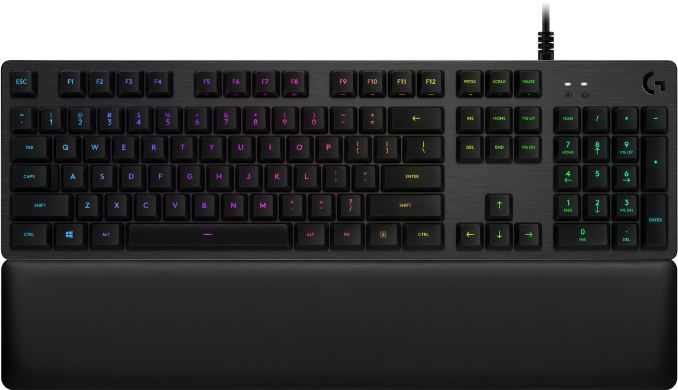
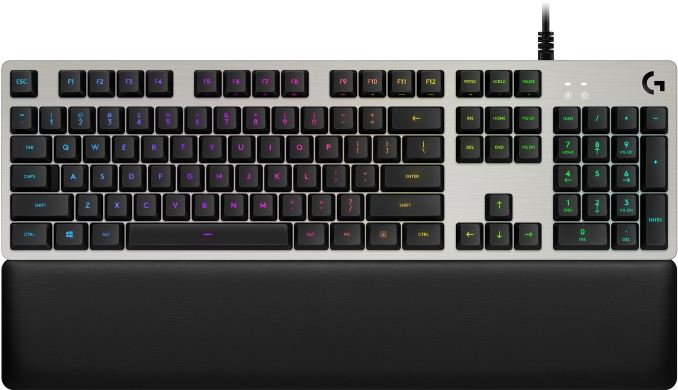








11 Comments
View All Comments
Holliday75 - Wednesday, March 21, 2018 - link
The end is nigh.alphasquadron - Wednesday, March 21, 2018 - link
Ok, someone update me on this. I am someone who does not understand how the market share for these blinking lights could be so big that they keep improving on them. Now they blink according to sound? What's next. But seriously, can someone legitimately reply back with who buys these. Not younger kids because they go towards consoles because of not having to deal with pc configuration/drivers/setup to play games. So that leaves pc-gamers with enough money to spend on extras like shiny lights. They can't be that big of a market right?HotBBQ - Wednesday, March 21, 2018 - link
A fool and his money are soon parted...abrowne1993 - Wednesday, March 21, 2018 - link
This looks like a PC-focused rip off of Philips' Ambilight tech which has been around (and used sparingly in some of their TVs) for over a decade.FullmetalTitan - Wednesday, March 21, 2018 - link
At the end of the day the target market is people already looking to upgrade components that don't mind spending $5-10 extra on a $200-300 purchase for some customizable light settings, and those who want the flashiest thing around.The side effect is that it is actually difficult to find products that DON'T have the lights (recently built a comp for my brother, GPU has RGB LEDs but the decision was based on the cooler/factory OC/warranty, so the LEDs are secondary and can be disabled).
For those that complain non-stop every time something new with lights comes out:
Don't buy it?
If you are forced into a situation (as above) where it comes along with an already planned purchase, just turn it off.
bigboxes - Wednesday, March 21, 2018 - link
I'll keep on commenting about anything I want. Don't like reading techies opinions on these and similar topics? Log off of the internet.ಬುಲ್ವಿಂಕಲ್ ಜೆ ಮೂಸ್ - Wednesday, March 21, 2018 - link
I like that keyboard design and would gladly part with it's true worth of $39.95I would then use it on an unsupported operating system
Not Windows 8 or 10!
Hurr Durr - Wednesday, March 21, 2018 - link
Ah, Win XP psycho is back.PeachNCream - Thursday, March 22, 2018 - link
I don't get it. Windows 7 is still supported by Microsoft right now. There's also Vista so an unsupported OS could be either of those, maybe 2000, some flavor of 9x, or a Linux distro too. Unsupported doesn't imply XP as the only option.Hurr Durr - Saturday, March 24, 2018 - link
You just don`t know who this XP psycho is. It went as moose something before and all it did was spam threads with its paranoia.